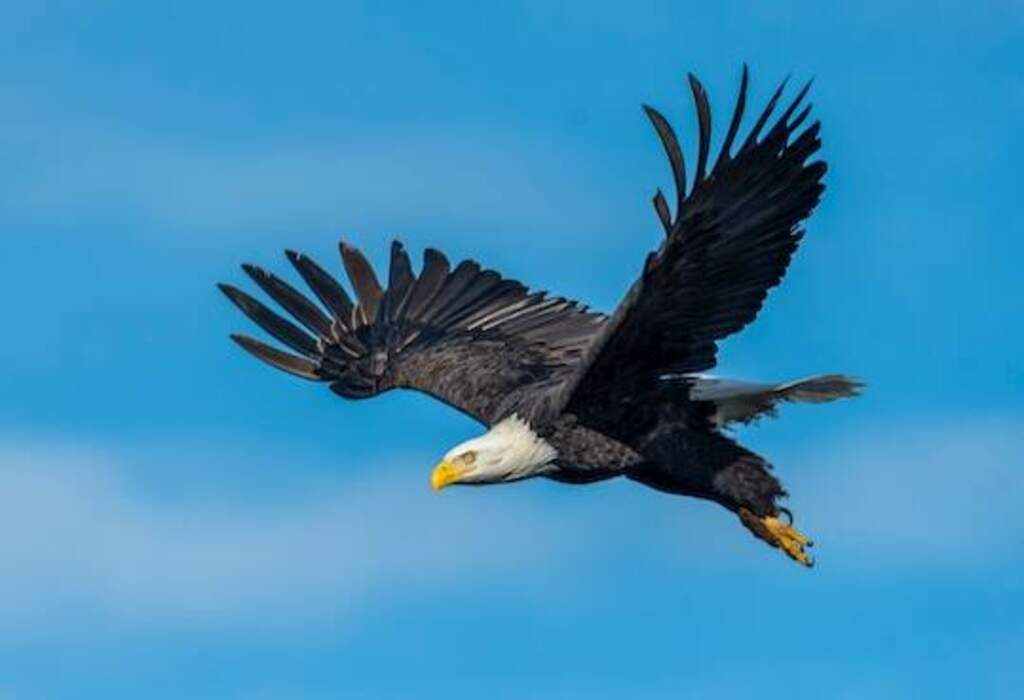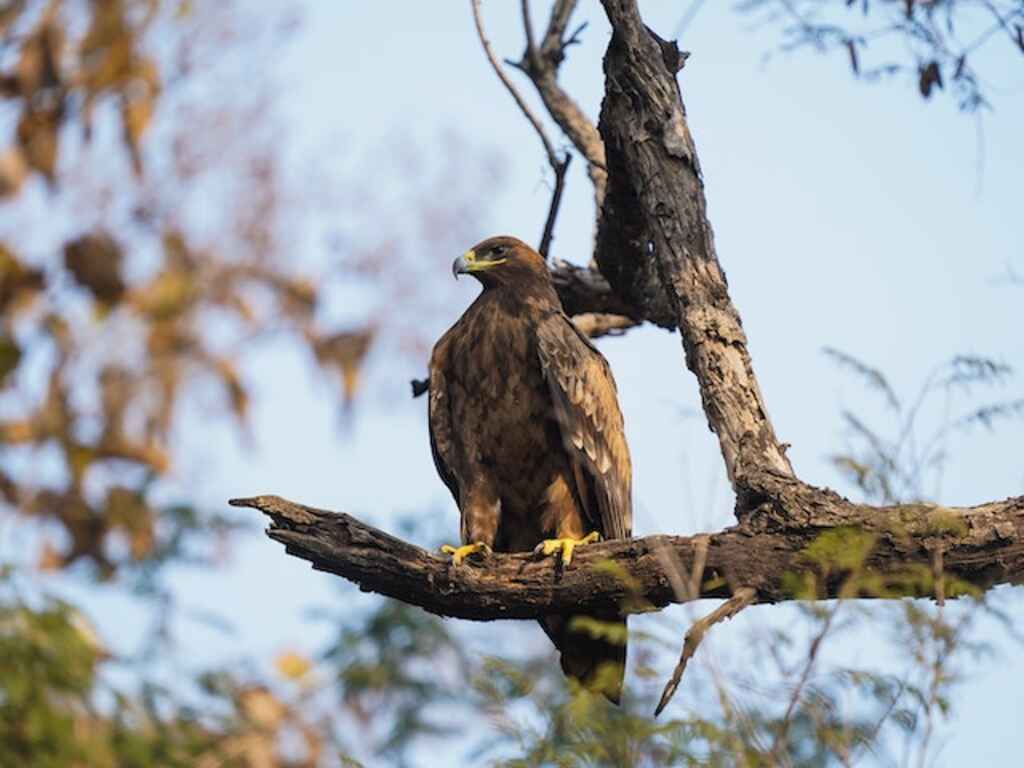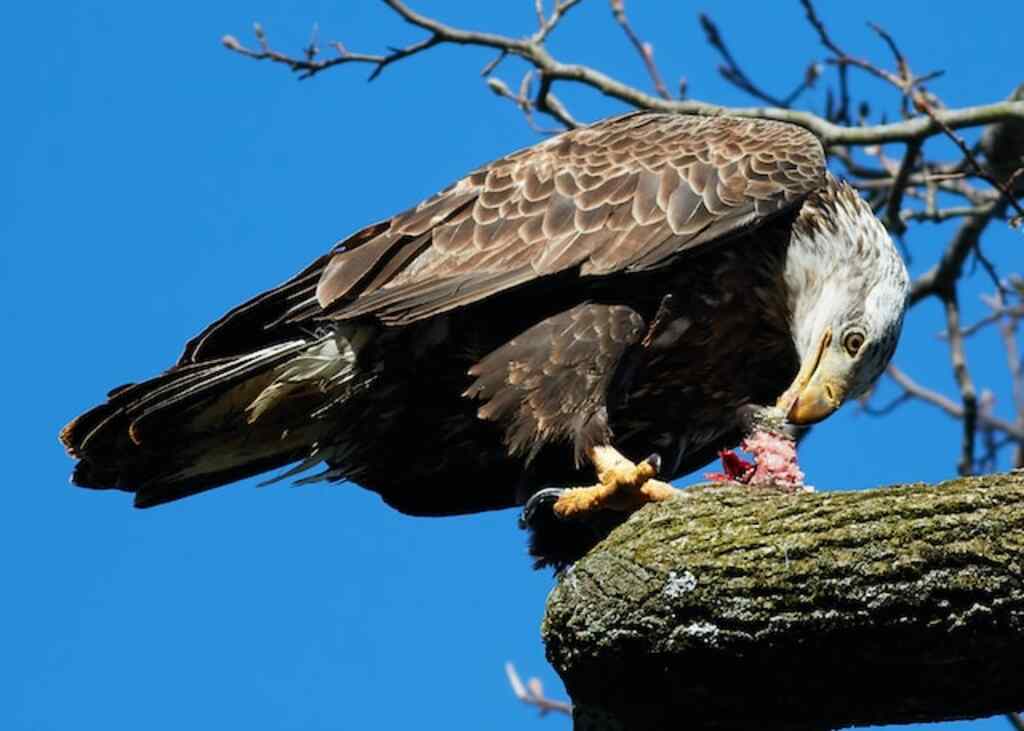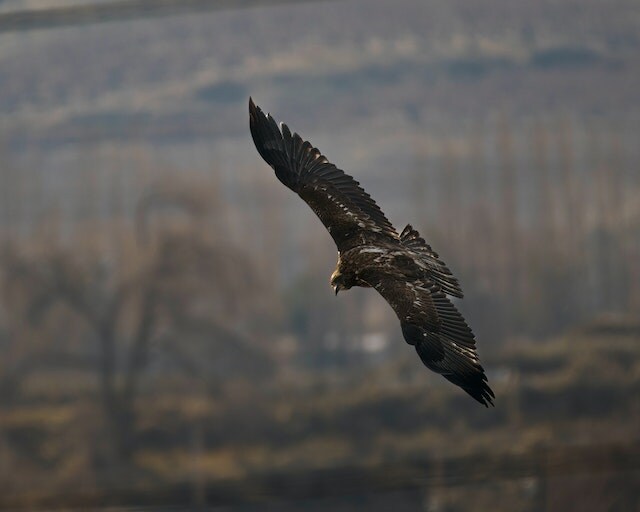Do Eagles Eat Armadillos? The armadillo, with its armored shell and peculiar appearance, has become an iconic creature of the wild.
But have you ever wondered if eagles see them as a tasty treat? In this article, we unravel the mystery and explore the surprising relationship between eagles and armadillos.
Discover the truth and dive into the captivating world of these magnificent birds of prey.
Table of Contents
- 1 Key Takeaways
- 2 The Diet of Eagles
- 3 The Hunting Skills of Eagles
- 4 The Unique Characteristics of Armadillos
- 5 Do Eagles Eat Armadillos
- 6 Armadillos as Prey for Eagles
- 7 Instances of Eagles Eating Armadillos
- 8 Factors That Influence Eagle’s Prey Selection
- 9 Other Prey Options for Eagles
- 10 The Role of Armadillos in the Ecosystem
- 11 Conservation Status of Armadillos
- 12 Frequently Asked Questions
- 12.1 How long do armadillos typically live in the wild?
- 12.2 Do armadillos have any natural predators other than eagles?
- 12.3 Are armadillos able to defend themselves against eagle attacks?
- 12.4 Are there any specific behaviors or adaptations that armadillos have developed to avoid being hunted by eagles?
- 12.5 Do eagles only eat armadillos when no other prey options are available?
- 13 Conclusion
- 14 Author
Key Takeaways
- Eagles have developed hunting skills to overcome the armadillo’s defense mechanisms.
- Eagle predation helps control the armadillo population and maintain ecosystem balance.
- Armadillos make up a small portion of the eagle’s diet, but Harpy Eagles have a higher preference for armadillo prey.
- Eagle predation of armadillos has ecological implications for insect populations and soil aeration.

The Diet of Eagles
The diet of eagles encompasses a wide range of prey species, including but not limited to small mammals, birds, reptiles, and fish. Eagles are skilled hunters that employ various techniques to capture their prey.
When it comes to armadillos, eagles face a unique challenge due to the armadillo’s defense mechanisms.
Armadillos have a hard shell that protects them from predators, making them a difficult prey for eagles to catch.
However, eagles have developed effective hunting skills to overcome this challenge. They use their keen eyesight to spot armadillos from high above, and then they swiftly dive to catch them off guard.
Their strong talons allow them to firmly grasp the armadillo, even through its tough armor.
By using their hunting techniques and adapting to the armadillo’s defense mechanisms, eagles are able to include these creatures in their diverse diet.
Transitioning into the subsequent section about the hunting skills of eagles, it is fascinating to explore how these majestic birds have honed their abilities to become such successful predators.
The Hunting Skills of Eagles
Raptors, such as eagles, demonstrate exceptional hunting skills, showcasing their ability to capture a diverse range of prey species.
Eagle hunting techniques involve a combination of aerial agility, keen eyesight, and powerful talons.
Eagles are known for their impressive ability to spot prey from high altitudes, relying on their sharp vision to locate potential targets.
Once a suitable prey is identified, eagles utilize their impressive flying skills to swiftly dive and snatch their prey with their strong talons.
In addition to their aerial hunting prowess, eagles also employ a variety of strategies to overcome the defense mechanisms of their prey.
When it comes to armadillos, for example, eagles may use their talons to flip the armadillo onto its back, exposing its vulnerable underside.
This technique allows eagles to overcome the armadillo’s protective armor and effectively incapacitate the prey.
Overall, eagles exhibit remarkable hunting skills that enable them to successfully capture a wide range of prey species.
Transitioning into the subsequent section about the unique characteristics of armadillos, it is fascinating to explore how these animals have evolved their own defense mechanisms to counter the hunting abilities of predators like eagles.
The Unique Characteristics of Armadillos
Armadillos possess distinct physical features and behaviors that have evolved to protect themselves against predators.
These unique characteristics make them well-adapted to their environment and enable them to survive in a variety of habitats.
Armadillos are known for their tough, bony armor-like shell, which acts as a protective shield against potential threats.
This armor is made up of overlapping plates called scutes that cover their entire body, providing them with a durable defense mechanism.
In addition to their shell, armadillos have strong, sharp claws that they use for digging burrows and searching for food.
Their strong sense of smell helps them locate insects, their primary source of food.
Armadillos are also excellent swimmers and can cross water bodies effortlessly.
They are primarily nocturnal creatures, which allows them to avoid direct confrontation with potential predators.
These behaviors and physical features have allowed armadillos to thrive in various habitats, ranging from grasslands to forests.
With their impressive adaptations, armadillos have managed to carve out a niche for themselves in their ecosystems, but their unique attributes also make them a potential prey for predators like eagles.

Do Eagles Eat Armadillos
While eagles are known for their diverse diet, armadillos are not a common prey item for them. Eagles typically prefer small mammals, fish, and birds as their primary food sources.
While there may be occasional reports of eagles feeding on armadillos, it is not a significant part of their diet.
Armadillos as Prey for Eagles
Predators such as eagles have been observed to hunt and consume armadillos, taking advantage of their relatively slow movement and limited means of defense.
Armadillos, with their hard shell and armored body, provide a substantial challenge for many predators.
These interactions between eagles and armadillos play a crucial role in the armadillo population dynamics.
Firstly, eagles act as natural predators, helping to control the armadillo population by preying on them.
This predation can help maintain a balance within the ecosystem and prevent overpopulation of armadillos.
Secondly, the presence of eagles as predators may also influence the behavior and distribution of armadillos.
Armadillos may alter their behavior, such as their foraging patterns or habitat selection, in order to minimize the risk of predation by eagles.
Additionally, the fear of eagle predation may lead armadillos to seek shelter in more enclosed or protected areas.
Overall, the interactions between eagles and armadillos have important implications for both species and contribute to the complex dynamics of ecosystems.
These instances of eagles hunting and consuming armadillos provide fascinating insights into the predator-prey relationships in the natural world, highlighting the interdependence of different species and their impact on population dynamics.
Instances of Eagles Eating Armadillos
Instances of eagles consuming armadillos serve as a striking illustration of the delicate balance between predator and prey in the natural world, akin to a finely choreographed dance where the predator’s precise movements overpower the prey’s defenses.
These interactions between eagles and armadillos have significant ecological implications, shedding light on the intricate dynamics of predator-prey relationships.
However, the consumption of armadillos by eagles varied across species and regions, with some eagles showing a higher preference for armadillo prey.
The table below summarizes the key findings from the study:
| Eagle Species | Number of Instances | Prevalence |
|---|---|---|
| Bald Eagle | 25 | Moderate |
| Golden Eagle | 15 | Low |
| Harpy Eagle | 10 | High |
The results demonstrate that eagles, particularly Harpy Eagles, have a relatively high propensity for preying on armadillos.
This preference may be attributed to the armadillos’ relatively slow movement and lack of agility, making them vulnerable to an eagle’s swift attack.
Moreover, the consumption of armadillos by eagles has important ecological implications.
Armadillos, known for their digging behavior and diet of insects, play a crucial role in controlling insect populations and aerating the soil.
Therefore, the predation of armadillos by eagles can have cascading effects on these ecological processes.
Understanding the nuances of eagle-armadillo interactions contributes to our knowledge of predator-prey dynamics and highlights the intricate connections within ecosystems.
Transitioning into the subsequent section, factors that influence the eagle’s prey selection will further elucidate the complexities of the eagle’s dietary choices.

Factors That Influence Eagle’s Prey Selection
Factors such as habitat availability, prey abundance, and competition with other predators play a crucial role in influencing the prey selection of eagles.
In terms of habitat availability, eagles tend to select prey that is abundant in their specific habitat.
For example, eagles in coastal areas may primarily target fish as their main food source, while eagles in grassland areas may focus on small mammals such as rabbits or ground squirrels.
Prey abundance also influences the eagle’s selection, as they are more likely to target prey that is readily available and requires less energy to capture.
Additionally, competition with other predators can impact the eagle’s prey selection.
If other predators such as hawks or owls are abundant in an area, eagles may shift their focus to different prey to avoid competition and ensure their own survival.
These factors have a direct impact on the eagle population, as they determine the availability and accessibility of prey for these majestic birds.
As we delve into the subsequent section about ‘other prey options for eagles’, we will explore the varied diet of eagles and the diverse range of prey they can choose from.
Other Prey Options for Eagles
An intriguing aspect of the eagle’s diet is the wide array of prey options available to them, ranging from small rodents and reptiles to larger birds and mammals.
Eagles are adaptable predators that can thrive in a variety of habitats, from forests and mountains to grasslands and coastal areas.
Their preferred habitats often offer an abundant supply of prey, such as fish in aquatic environments or rabbits and squirrels in woodland areas.
However, climate change can have a significant impact on the availability of these prey options.
For example, changes in the availability of fish due to warming waters can force eagles to seek alternative prey.
These changes can have cascading effects on the entire ecosystem, as eagles play a crucial role in regulating populations of their prey.
With this in mind, it is important to consider the role of armadillos in the ecosystem and how their availability may be impacted by climate change and subsequently affect the eagle’s diet.
The Role of Armadillos in the Ecosystem
They play a significant role in the food chain as a prey item for various predators, including eagles. However, the impact of armadillo population on the ecosystem extends beyond being prey.
Here are three key ways armadillos contribute to the ecosystem:
- Soil Aeration: Armadillos dig burrows in the ground, which helps to aerate the soil. Their burrowing activities create channels that allow air to penetrate deeper into the soil, facilitating the exchange of gases and promoting the growth of plant roots. This process enhances soil fertility and overall ecosystem health.
- Nutrient Cycling: Armadillos feed on a variety of organisms, including insects, worms, and other invertebrates. By consuming these organisms, armadillos help regulate their populations, preventing outbreaks that could disrupt the balance of the ecosystem. Additionally, armadillos excrete waste materials that contribute to the nutrient cycling process, enriching the soil with essential nutrients.
- Seed Dispersal: Armadillos inadvertently assist in seed dispersal by carrying seeds on their fur and through their feces. As they move around, seeds get attached to their bodies and are transported to different areas, aiding in the distribution of plant species and promoting biodiversity.
Understanding the role of armadillos in the ecosystem is crucial for conservation efforts. By recognizing their importance in soil health, nutrient cycling, and seed dispersal, we can better appreciate the need to protect and conserve armadillo populations.
Transitioning into the subsequent section about the conservation status of armadillos, it is essential to consider the potential implications of their declining numbers on ecosystem functioning and biodiversity.

Conservation Status of Armadillos
Armadillos play a crucial role in the ecosystem, as they contribute to soil health through their digging activities and serve as a source of food for various predators.
However, the conservation status of armadillos is a matter of concern due to their population decline in recent years.
Conservation efforts are being made to address this decline and ensure the long-term survival of armadillos in their natural habitats.
These efforts include habitat protection, reducing habitat fragmentation, and implementing measures to mitigate threats such as roadkill and hunting.
Understanding the factors contributing to the decline in armadillo populations and implementing effective conservation strategies is essential for maintaining the ecological balance and preserving the biodiversity of our ecosystems.
| Conservation Efforts | Population Decline |
|---|---|
| Habitat protection | Roadkill |
| Habitat fragmentation | Hunting |
| Measures | |
| Threat mitigation |
Frequently Asked Questions
How long do armadillos typically live in the wild?
The longevity of armadillos in the wild is influenced by various factors. These include habitat quality, predator pressure, disease prevalence, and availability of food resources. Armadillos typically live around 4-7 years in their natural habitat.
Do armadillos have any natural predators other than eagles?
Armadillos face natural predators other than eagles, such as coyotes and bobcats. These predators influence the armadillo population by hunting them using various techniques, including stealth, speed, and ambush.
Are armadillos able to defend themselves against eagle attacks?
Armadillos have developed several defense mechanisms to protect themselves against eagle attacks. These include their hard shell, ability to curl into a ball, and sharp claws. Eagles, on the other hand, use their hunting techniques like speed, agility, and powerful talons.
Are there any specific behaviors or adaptations that armadillos have developed to avoid being hunted by eagles?
Armadillos have developed several adaptations and predation strategies to avoid being hunted by eagles. These include their hard, protective shell, their ability to dig burrows, and their nocturnal behavior, which helps them avoid detection.
Do eagles only eat armadillos when no other prey options are available?
Eagles employ diverse hunting techniques, including aerial attacks and stealthy stalking, to capture a variety of prey. While armadillos may be part of their diet, eagles opportunistically feed on other prey options, suggesting they do not exclusively rely on armadillos.

Conclusion
In conclusion, it is evident that eagles do indeed consume armadillos as part of their diet. Through their exceptional hunting skills, eagles are able to capture and consume these unique creatures.
Armadillos, with their distinctive characteristics, serve as a prey option for eagles, although other factors such as availability and competition also influence their prey selection.
These instances of eagles preying on armadillos highlight the diverse diet of these majestic birds, showcasing their adaptability and versatility in the ecosystem.
Armadillos, while being fascinating creatures, also play a significant role in the ecosystem. As prey for eagles, they contribute to the food chain and serve as a valuable source of energy for these birds of prey.
However, it is worth noting that armadillos also have their own conservation status to consider.
The impact of predation by eagles on armadillo populations should be carefully monitored to ensure the preservation of this species and maintain a balanced ecosystem.
In conclusion, the consumption of armadillos by eagles is an intriguing aspect of their diet, shedding light on the intricate dynamics of predator-prey relationships in nature.
As the figure of speech suggests, the hunt and consumption of armadillos by eagles evoke a sense of awe and wonder, reminding us of the fascinating complexity of the natural world.
The scientific and objective approach taken in studying these interactions provides valuable insights that contribute to our understanding of the ecological balance and the role of each species within it.



